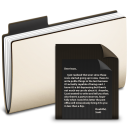چاپ صفحه | صفحه نخست سامانه |  چکیده مقاله |  نویسندگان | مؤسسه علوم و صنایع غذایی |
| کد مقاله | 1881 |
| عنوان فارسی مقاله | Quantification of Crocin, Picrocrocin and Safranal in Saffron Stigmas Obtained from Sounded Corms with Acoustic Waves |
| عنوان لاتین مقاله | Quantification of Crocin, Picrocrocin and Safranal in Saffron Stigmas Obtained from Sounded Corms with Acoustic Waves |
| نمایه علمی معتبر | JCR |
| IF | 3.733 |
| عنوان نشریه | PHYTOCHEMICAL ANALYSIS |
| شماره نشریه | 6 |
| دوره | 32 |
| سال انتشار شمسی | 1400/08/10 |
| سال انتشار میلادی | 2021 |
| Introduction: Plant acoustic frequency technology (PAFT) is the effect or treatment of a plant with a specific frequency sound wave. Objective: The sound waves with different frequencies and a sound pressure level 77 dB were emitted on the saffron corms in a controlled environment using aeroponic cultivation and the contents of crocin, picrocrocin and safranal in their produced stigmas were analyzed by high performance liquid chromatography. For this purpose, the corms were divided into two groups. In group 1, sound waves with the frequencies of 0.5, 1, 2 kHz were emitted on saffron corms in different stages of sprouting, flowering and the whole stage of sprouting and flowering. In group 2, sonication was performed on the corms during the flowering stage at 4, 8, 12, 16 kHz frequencies. Results: The changes in the contents of crocin, picrocrocin, and safranal were not significantly compared to the control at 0.5, 1, 2 kHz frequencies in the stages of sprouting and flowering of corms. While the higher frequencies (4, 8, 12, 16 kHz) in flowering stage were affected significantly, the crocin and picrocrocin content increased 8.5% and 30%, applying the frequency of 12 and 8 kHz, respectively. Also, the effect of sound exposure time per day with the frequency of 16 kHz at 15, 30 and 60 minutes were investigated. Conclusion: The findings showed that the corms could be affected by sounding in the different stages of growth of the corm and also in the content of secondary metabolites. |
| نویسنده | نفر چندم مقاله |
|---|---|
| بی بی مرضیه رضوی زاده | اول |
| نورا عربشاهی دلوئی | دوم |